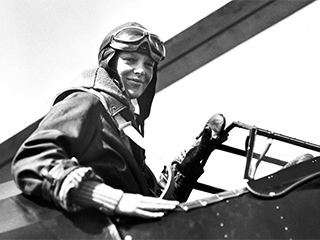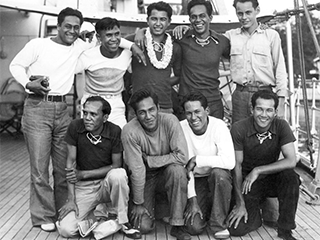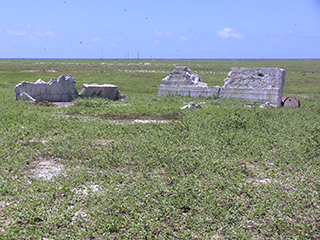
| Commemorative DXpedition | |
| This DXpedition commemorates the 81st anniversary of Amelia Earhart's disappearance on July 2, 1937 near Baker & Howland islands -- as well as the commitment and sacrifices made by the Hui Panalāʻau -- a group of brave young men from Hawaiʻi who lived on Baker, Howland and Jarvis from 1935-1942. | |
 |
 |
| Amelia Earhart (January 1936) |
Hui Panalā’au students on the Itasca (January 1936) |
| Not many people know that the Hui Panalāʻau (students just out of high school) were unsung heroes -- part of the American Equatorial Islands Colonization Project, which helped establish Baker, Howland and Jarvis as legitimate US territories by forming settlements on Baker and Howland. The settlement on Baker Island was named Meyerton, after Captain H.A. Meyer of the US Army, who helped establish the Hui Panalāʻau camps in 1935. Itascatown, on Howland Island, was named after the USCGC ship Itasca which transported the students to the islands from Hawaii. Some of these young men lost their lives during the simultaneous attacks on Pearl Harbor & Baker-Howland-Jarvis on December 7-8, 1941. |
|
 |
 |
| Earhart Lighthouse on Howland Island | Remains Of Meyerton on Baker Island |
| There is a strong connection between Earhart’s trip around the world, and these Hui Panalā’au colonists. The students helped build the landing strip on Howland for Earhart’s arrival and were waiting to welcome her on both Baker and Howland. Itasca was anchored at Howland and in constant communication with Earhart as she made her final approach to Howland, but then disappeared presumably in the vicinity of Baker-Howland, which are only 40 miles apart. From some reports, a few colonists were also on the Itasca during those final hours. Our DXpedition not only honors Earhart — who is often cited as a role-model for young girls because of her independence, persistence, and courage — but also recognizes the important role the brave young Hui Panalāʻau students played in US history. |
|
Copyright © 2017-2018 Webmaster: K6MM